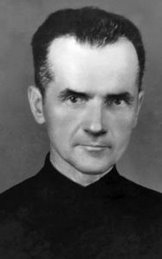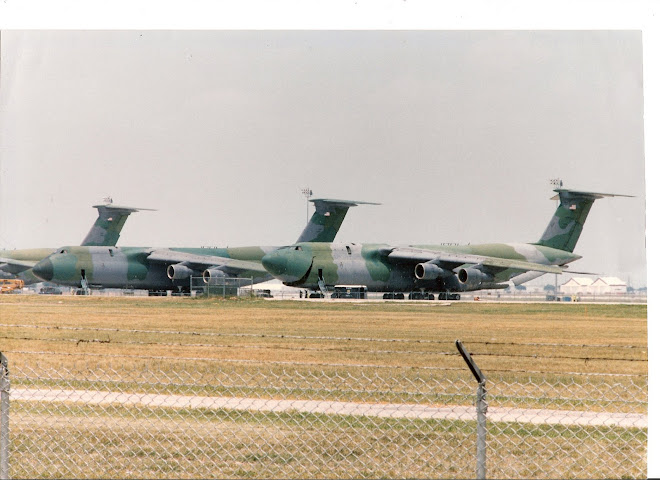"That is not your Mosin Nagant you have. It belonged to others before you and will belong to others after you are gone. Look after it and pass it on with pride. It deserves it."
- Author Unknown
- Author Unknown

Finally, I took the Mosin Nagant 91/30 rifle out to the range. It had been almost a year since I bought it, and I hadn't been shooting recently, either. Of course, I still blogged about this Russian rifle twice: once when I first got it, and second when I left them outside in the summer heat to get some of the Cosmoline off of them. In this second posting, I made an interesting observation on the 'religiosity' of the Mosin Nagant.
Before taking it to the range, I took the gun apart. I did it to check out all the parts, make sure they all looked intact, and to clean all that Russian version of Vaseline known as Cosmoline. At the end of World War II, these rifles were refurbished and then dipped in vats of Cosmoline, a petroleum-based substance used to limit rust and corrosion. Then they were set aside, ready for the start of the Great Patriotic War against the Capitalistic American Enemy. That never happened, and so at some point people in Russia realized that people all over the world would pay under $100 for these surplus firearms, even if they were still smothered in a cake of old Cosmoline.

Notice that the economy has even hit the surplus firearm market. I payed a little bit more than $100 for mine, but not much.
One other thing was done for each Mosin Nagant. Each one was blessed, considering it could have been used for more than just defending Mother Russia. Combatants often abandon morals - recall news of some atrocious behavior by our Marines in Afghanistan - and I did not want to have what could have been a weapon of oppression in my house.
As I said, I took this gun apart to clean it. If you don't do this, the cosmoline tends to ooze out of all the nooks and crannies as the rifle heats up. Then you have to clean off more than just the usual metal and gunpowder reside off of your hands.
It got really hot when we shot it, by the way.
I noticed that there was an additional bolt in the stock of this rifle. When I looked inside I saw that there was a break in the stock where the wood bridged from one side to the other


Another thing I forgot to mention was that the armorers seemed to be a little stamp-crazy when they worked on these. Nearly every flat surface would have some sort of symbol or letter - some of them Cyrillic - indicating Lord only knows what about the rifle. There are online resources which can help decipher the marks. In the case of this rifle, it was made in 1942 at the Izhevsk weapons manufacturing plant in Russia. Typically the serial number is stamped on the receiver, the base plate of the magazine, and the butt plate. In my case, all three serial numbers are the same, indicating that those were probably the original parts rather than those scavenged from another rifle.
After I put it back together, this is what it looked like. Of course, I still don't know what those few leftover pieces were supposed to go.......

Then I put it on my bedroom floor and took another picture, complete with my unpolished boots.

Game Day. We took it to Elm Fork Shooting Sports in Dallas. It is located in a bad part of town, unfortunately. I told the children to avoid looking at the advertisements; most of the businesses around there were the kind that one finds around firing ranges, airports, and military installations. Sad.
Still, the folks there were really nice. I realized that the business card I had gotten from them last year - complete with holes punched in it - was actually a ticket for 10 visits to the rifle/pistol or shotgun ranges. In other words, I had already paid for our shooting that day. Woo-hoo!
We got a lane in the 'tactical' part of the range so we could shoot both rifle and pistols without moving around a lot. Here the Mosin Nagant is lying on the bench, and the target is 30 yards away.

I wanted to shoot it first, not only because IT'S MY TOY, but also because I knew from my reading that there was a small chance that the firing pin could penetrate the primer too much and cause some of the escaping gases to spray back toward the operator. I donned protective eyewear to go over my glasses, and assumed the position. I lined up the center 'X' with the sights, and tried to control my breathing and steadying my aim. I suddenly glanced at the end of the bolt, where a scratch made by some armorer long ago indicated that the firing pin was positioned correctly. I started to think about that Canadian rifle from World War I, the one with the straight-pull bolt, which had a nasty tendency to occasionally slam back into the eye of the soldier. I said a quick prayer to my guardian angel, took aim, breathed in, exhaled slowly, and gently squeezed the trigger.
Bam!
Not bad. The kick wasn't as bad as I thought it would be. I studied the target. I was sure I must have hit the target. I mean, there was no way that this old rifle, well known for its accuracy, could have not hit the target. Nothing. I was dumbfounded. I slid back the bolt, ejecting the first spent shell, and fed in the next cartridge into the receiver. I still couldn't believe it. I had totally missed the target!
Just then I noticed that there was an unusually large hole in the target to the right of mine. Two men at the station next to us were having a field day shooting off .223 caliber rounds. They had a whole bunch of weapons laid out, including at least one AK-47, but at that time they were shooting the smaller caliber AR-15 bullets. They either did not notice, or did not care, that a larger bullet (approximately .30 caliber) had suddenly joined their groupings.
Well that was it. Here I am firing it. We tried using the little stripper clips to speed load it, but they did not work. We shall have to try it some other time. This is me:
Here Benedict(15) shoots the Mosin Nagant from a standing position. You can get a good look at the rifle and how fun it is to shoot.
As we continued firing, eventually putting 60 rounds through it, I noticed a few things. One is that the barrel and receiver got really hot. I burned my thumb when I touched it one time, and I noticed that the heat coming off the barrel made the target seem to swim in the sights. I also noticed that the action seemed stiffer and harder to work. Then there was the shoulder discomfort. My shoulder is still a little sore today. When you watch Cornelius (11) shoot, you can see how the bolt seems to be fighting us and that the recoil could really do a number on one's shoulder or collarbone:
Each of us shot almost 20 rounds through the Mosin Nagant; one of my daughters did accompany us and at least shot it once just to see what it was like. By the end of the day, all I could think about was how hard it must be shooting that rifle while German soldiers charge at you. Another reason to pray for peace.
The next day, I shot pellet guns in the back yard with some of the younger boys. That will have to be another story for another day:

And now for something completely different:



















No comments:
Post a Comment